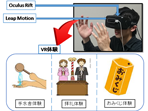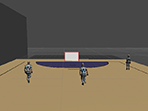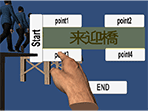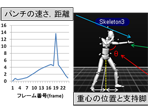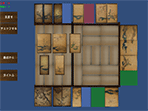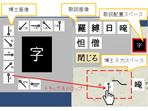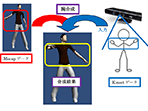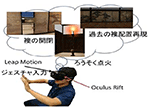| Virtual Experience System for Learning Japanese Shrine Manners using HMD and Leap Motion |
Sightseeing spots in Japan are becoming more popular with foreign tourists. In this research, I developed a virtual experience system so that such tourists can learn the manners of Japanese shrines with HMD and Leap Motion to deepen their understanding of ritual in Japanese culture.This system allows users to visit a virtual shrine by HMD. By gestures that are input using Leap Motion and HMD, users can virtually experience three actions: chozuya (purification), hairei (worship), and omikuji (written fortune) at the virtual shrine. In the chozuya and omikuji experiences, Leap Motion detects the motions of hands and users can virtually experience these actions with particular gestures based on customs. For the hairei experience, Leap Motion recognizes the clapping gesture, and HMD finds the incline of the user's head. Users can play nirei-nihakushu-ichirei (two bows, two claps, and one bow) as a virtual experience of Japanese shrine manners.To examine the operability and usability of this system, I asked one foreign teacher and nine Japanese students in our university to try it. Our result suggests that system operability slightly improved their understanding of Japanese shrine manners.
